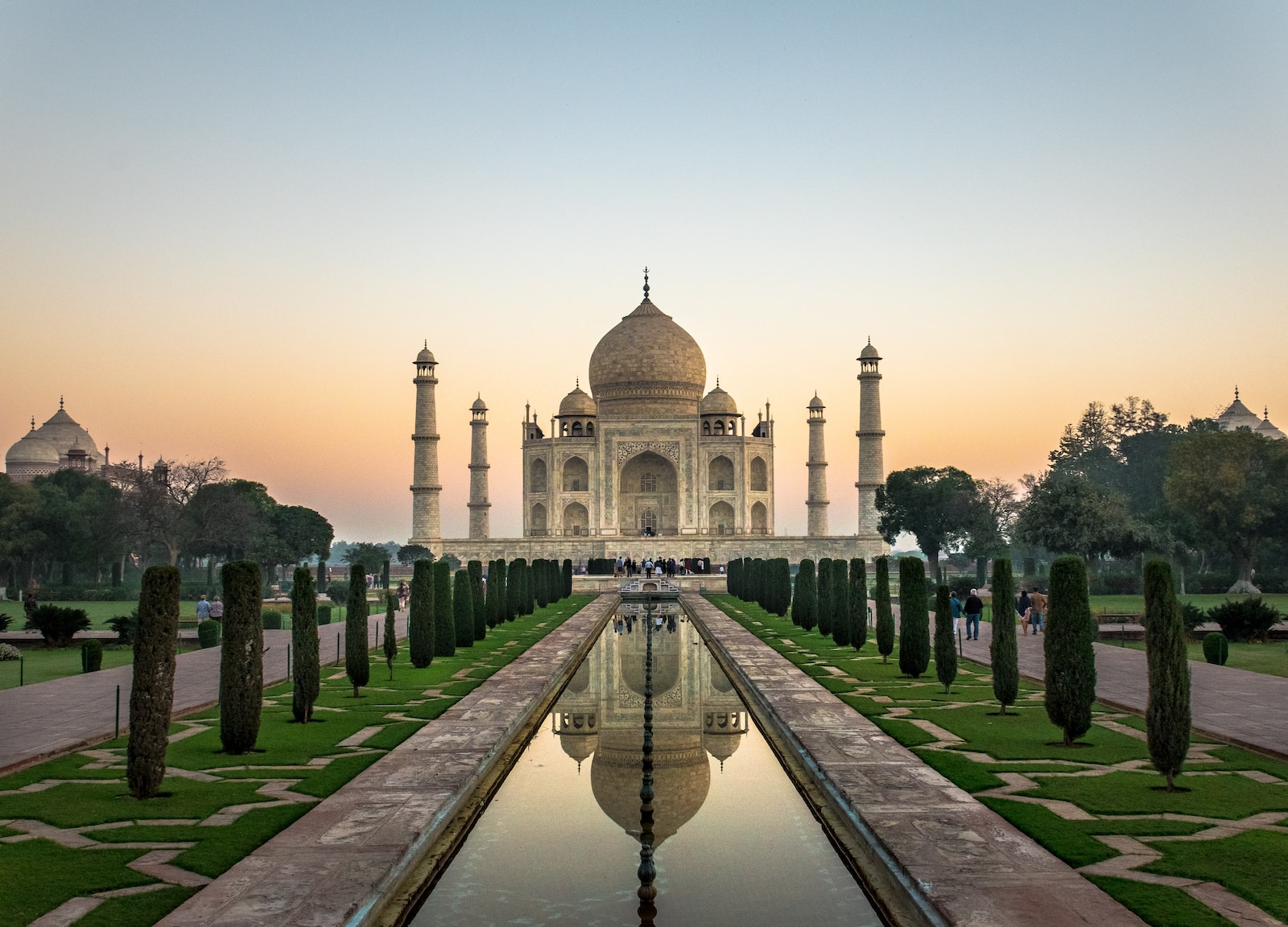Historical locations have long been popular tourist destinations for those seeking a glimpse into the past. These sites provide visitors with an opportunity to explore and understand different cultures, civilizations, and historical events that shaped our world today. From ancient ruins to medieval castles and wartime memorials, these attractions offer a window into the rich history of humanity.
Exploring historical locations not only provides insight into the past but also allows us to reflect on our present circumstances. It is fascinating to see how people lived in earlier times, what they believed in, their struggles and triumphs, and how it all led up to where we are now. Additionally, visiting such places can broaden one’s understanding of different societies and cultures by offering unique perspectives that cannot be found anywhere else. In this article, we will delve deeper into some of the most popular historical locations around the world that continue to draw tourists year after year.
The Great Wall Of China
The Great Wall of China is a monumental structure that is steeped in cultural significance. The wall dates back to the third century BC when it was initially built as a series of small walls to protect China’s northern borders from invading forces. However, over time, these smaller walls were connected and rebuilt into one continuous fortification system that stretches over 13,000 miles.
The preservation efforts for the Great Wall are extensive due to its status as a globally recognized cultural heritage site. With millions of visitors annually, there has been an increasing demand for adequate maintenance and restoration work on the wall’s sections. In recent times, however, some concerns have arisen regarding the impact of tourism on the wall’s structural integrity. Despite such challenges, various conservation and management initiatives continue to be implemented to ensure that this iconic landmark remains intact for future generations.
The Pyramids Of Egypt
The Pyramids of Giza, located on the outskirts of Cairo, are one of the most iconic landmarks in Egypt. The pyramids served as tombs for pharaohs during ancient times, with each pyramid constructed over a period of 20 years or more using millions of limestone blocks. Visitors to these historical sites can explore the Great Pyramid – Khufu’s tomb – which is also considered one of the Seven Wonders of the World.
Apart from its history, mythology surrounds the construction of the pyramids. Legends tell tales about how slaves built these structures under harsh conditions without any help from modern technology. However, researchers have found evidence that suggests otherwise; it was skilled workers who were paid wages for their work on constructing these magnificent buildings. Exploring this site offers an opportunity to learn more about both Egyptian history and mythology.
Today, tourists flock to see these architectural marvels that date back thousands of years ago. A well-managed tourism infrastructure has developed around these pyramids providing visitors with easy access and informative guides at affordable prices. Moreover, there is now growing concern regarding preservation efforts towards protecting these wonders for future generations. This effort includes measures such as regulating visitor numbers and enforcing strict rules against vandalism or looting in order to maintain this world heritage site’s integrity. Overall, visiting these pyramids not only provides opportunities to experience ancient history but also contribute towards preserving them for future explorers to come.
The Colosseum In Rome
As fate would have it, the Colosseum in Rome has become one of the most popular tourist destinations for those seeking a glimpse into ancient Roman history. This architectural wonder was built between AD 70-80 and is considered to be the largest amphitheater ever constructed.
The historical significance of this iconic landmark cannot be overstated. It was mainly used as an entertainment venue where gladiatorial contests and public spectacles were held. The Colosseum could accommodate up to 50,000 spectators at any given time, making it a hub of activity during its prime. Despite being damaged by earthquakes over the years, this marvel still stands strong today and continues to attract millions of tourists annually who seek to explore and appreciate its grandeur.
The Acropolis In Athens
The Acropolis in Athens is a historical wonder that has captivated tourists from all over the world. This ancient citadel sits atop a hill overlooking the city of Athens and houses several iconic ruins, including the Parthenon – an architectural masterpiece built in honor of the goddess Athena. The significance of the Parthenon lies not only in its impressive design but also in its cultural value as it represents one of Greece’s most important contributions to Western civilization.
Over time, however, the Acropolis had fallen into disrepair due to various factors such as natural disasters and human destruction. Restoration efforts at the Acropolis began during the 19th century when archaeologists started excavating and restoring some of its structures. Today, visitors can witness ongoing restoration work on parts of this historical site, which serves as a testament to humanity’s desire to preserve our shared heritage. As we continue to strive for progress and development, it is crucial that we never forget where we came from and what made us who we are today.
The Alhambra In Granada
After marveling at the grandeur of the Acropolis in Athens, it’s time to explore another popular tourist destination – The Alhambra in Granada. This fortress and palace complex is one of Spain’s most iconic landmarks that boasts a rich cultural history and stunning architectural features.
Built during the 13th century by Nasrid dynasty rulers, The Alhambra was originally intended as a military stronghold before being converted into a royal palace. Its intricate designs, arches, and ornate stucco work are testaments to the Islamic influence on Spanish architecture. Visitors can’t help but be awed by its courtyards teeming with fountains and gardens that exude an aura of tranquility amidst the hustle and bustle of modern-day life. As such, The Alhambra remains revered for its cultural significance not just among Spaniards but people from all over the world who come to witness firsthand this magnificent masterpiece.
The structural design of The Alhambra reflects Granada’s diverse past through various additions made by different dynasties who ruled over it throughout history. Despite undergoing renovations over centuries, many original elements remain intact today which lends itself well to an immersive experience for tourists wanting to learn about Moorish artistry. From its imposing towers offering panoramic views of the city below to delicate carvings adorning walls – there is no shortage of what visitors can discover here while experiencing a deep sense of freedom wandering around these ancient grounds.
Machu Picchu In Peru
Nestled high in the Andes Mountains of Peru, Machu Picchu is a breathtaking sight to behold. The ancient Inca city sits atop a peak surrounded by lush greenery and misty clouds, giving visitors an otherworldly experience as they explore its ruins. The hike up to Machu Picchu is not for the faint of heart, but it is well worth the effort for those seeking adventure and a glimpse into history.
For hikers looking to immerse themselves in nature while getting their adrenaline fix, Machu Picchu offers numerous hiking trails that cater to all skill levels. From easy walks through nearby villages to multi-day treks along steep mountain ridges, there’s something for everyone. Along these routes, travelers will encounter stunning vistas of snow-capped peaks and cascading waterfalls that add to the already magical atmosphere of this UNESCO World Heritage site.
No trip to Machu Picchu would be complete without indulging in the local cuisine. Visitors can feast on delicacies such as lomo saltado (stir-fried beef), ceviche (raw fish marinated in citrus juice), and quinoa soup – dishes which reflect both Peruvian culture and geography. With so much natural beauty surrounding them, it’s no surprise that locals have learned how to use fresh ingredients from their surroundings when cooking up these traditional meals. For adventurous eaters looking to try something new or simply enjoy delicious food with unparalleled views, Machu Picchu is definitely worth a visit.
The Taj Mahal In India
After exploring the ancient ruins of Machu Picchu in Peru, travelers may find themselves drawn to another iconic historical landmark – The Taj Mahal in India. This stunning mausoleum is located in Agra and was built by Emperor Shah Jahan as a tribute to his beloved wife Mumtaz Mahal. Completed in 1653, it took over two decades to construct and is considered one of the most impressive examples of Mughal architecture.
The Taj Mahal’s cultural significance cannot be understated as it serves as a symbol of love, devotion, and beauty. Its design incorporates elements from Islamic, Persian, Ottoman Turkish, and Indian architectural styles that blend seamlessly together to create an awe-inspiring sight. Furthermore, the intricate carvings and colorful patterns found throughout the monument represent traditional art forms that have been passed down through generations. Its magnificent white marble exterior has made it one of the most recognizable landmarks across the globe and draws millions of visitors every year who are eager for a glimpse at its breathtaking splendor.
Continuing on with our journey to explore historical locations around the world we cannot miss out on visiting this masterpiece which stands tall today after centuries since its construction. With its rich history dating back several hundred years ago combined with remarkable architecture that tells numerous stories about culture and symbolism- The Taj Mahal should definitely make your list when deciding what destination you want to visit next!
The Palace Of Versailles In France
The Palace of Versailles in France is an iconic symbol of the country’s grandeur and opulence. The palace, which was originally built as a hunting lodge for King Louis XIII, underwent several renovations under subsequent monarchs until it became the stunning architectural masterpiece that visitors see today. The palace showcases different architectural styles such as Baroque, Rococo, and Neoclassical, reflecting the changing tastes of French royalty over centuries.
History and architecture enthusiasts will appreciate exploring this historical site’s numerous rooms adorned with intricate details like ornate ceilings, gold leaf accents, and elegant furnishings. Visitors can also admire the royal chapel’s impressive dome and view priceless art collections housed in various galleries throughout the palace. Moreover, tourists should not miss out on witnessing Hall of Mirrors’ breathtaking beauty- one of Versailles’ most famous attractions.
The Palace of Versailles is renowned worldwide for its sprawling gardens and fountains. Covering more than 800 hectares of land, these manicured grounds are divided into formal French-style gardens (including parterres, bosquets) and landscaped parks featuring romantic pathways dotted with sculptures and water features. Tourists can enjoy leisurely strolls around tranquil lakes or indulge in boating activities while admiring their surroundings’ picturesque views. Additionally, they may witness musical fountain shows where colorful lights dance along to music amid synchronized jets shooting up from vast pools of water – a spectacle worth experiencing!
The Auschwitz Concentration Camp In Poland
Visiting Auschwitz can be a highly emotional experience for many tourists. The concentration camp, located in Poland, was the site of one of the most horrifying atrocities committed by human beings during World War II. For this reason, it holds great historical significance and attracts visitors from all over the world who wish to pay their respects to those who suffered and died there.
Guided tours are available at Auschwitz to ensure that visitors gain a full understanding of what happened there. The educational exhibits provide insight into the daily lives of prisoners and offer glimpses into their experiences. Seeing these artifacts up close can be overwhelming but is an essential part of bearing witness to this dark period in history. While visiting Auschwitz may not be easy emotionally, it offers a chance to reflect on the lessons learned from such horrors and serves as a reminder to never let such atrocities happen again.
Hiroshima Peace Memorial Park In Japan
After exploring the solemn grounds of Auschwitz Concentration Camp, one may feel compelled to continue their journey through history by visiting Hiroshima Peace Memorial Park in Japan. This memorial park is dedicated to commemorating the victims and survivors of the atomic bombing of Hiroshima on August 6th, 1945. The park features several monuments, including the A-Bomb Dome which serves as a reminder of the devastation caused by nuclear weapons.
Visiting memorials such as Hiroshima Peace Memorial Park can provide a unique opportunity for learning history through travel. It allows visitors to not only read about historical events but also witness firsthand how they have impacted society. By experiencing these locations, tourists can gain a deeper understanding and appreciation for what has occurred in the past while reflecting on how we can prevent similar tragedies from happening in the future.
Conclusion
Historical locations are popular tourist destinations all over the world. They not only offer a glimpse into the past but also provide significant insight into different cultures and civilizations. From the Great Wall of China to Hiroshima Peace Memorial Park in Japan, these places serve as reminders of humanity’s struggles and triumphs throughout history.
One such location is Auschwitz Concentration Camp in Poland, which stands as a symbol of Nazi terror during World War II. The harrowing stories from survivors who lived through unimaginable horrors at this site remind us that we must never forget the atrocities committed in our shared history. As George Santayana once said, “Those who cannot remember the past are condemned to repeat it.”
These historical sites have stood for centuries and will continue to do so for generations to come. They allow us to reflect on our collective experiences and learn valuable lessons from them. Visiting these landmarks can be an enriching experience that helps us appreciate our diverse backgrounds while giving us hope for a better future. In short, exploring historical locations gives us an opportunity to gain perspective on where we came from and how far we’ve come as a society.





